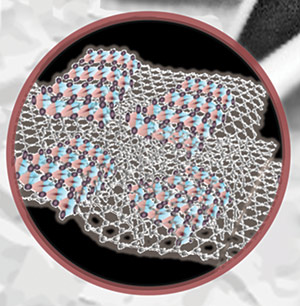Origami electronics

Photo courtesy the researchers
Research from the lab of Liwei Lin, professor of mechanical engineering, has given new meaning to the term “working paper.” Using inexpensive materials, the scientists have fabricated electronic switches and sensors directly onto paper, where simply folding it could switch circuits on and off or otherwise change their activity — a kind of electronic origami. This new technology uses molybdenum carbide as the conducting metal. Molybdenum ions are added to gelatin in solution; the paper is then coated with the solution and dried. A laser beam precisely “writes” the desired circuitry patterns — about 100 microns wide — heating the molybdenum to about 1,000 degrees centigrade and forming conductors of durable molybdenum carbide. The unheated portions of the paper remain non-conductive, and the gelatin coating prevents the laser beam from burning the paper. Future research in this area will be focused on integrating components for energy generation, storage and functional use all on a single piece of paper.

